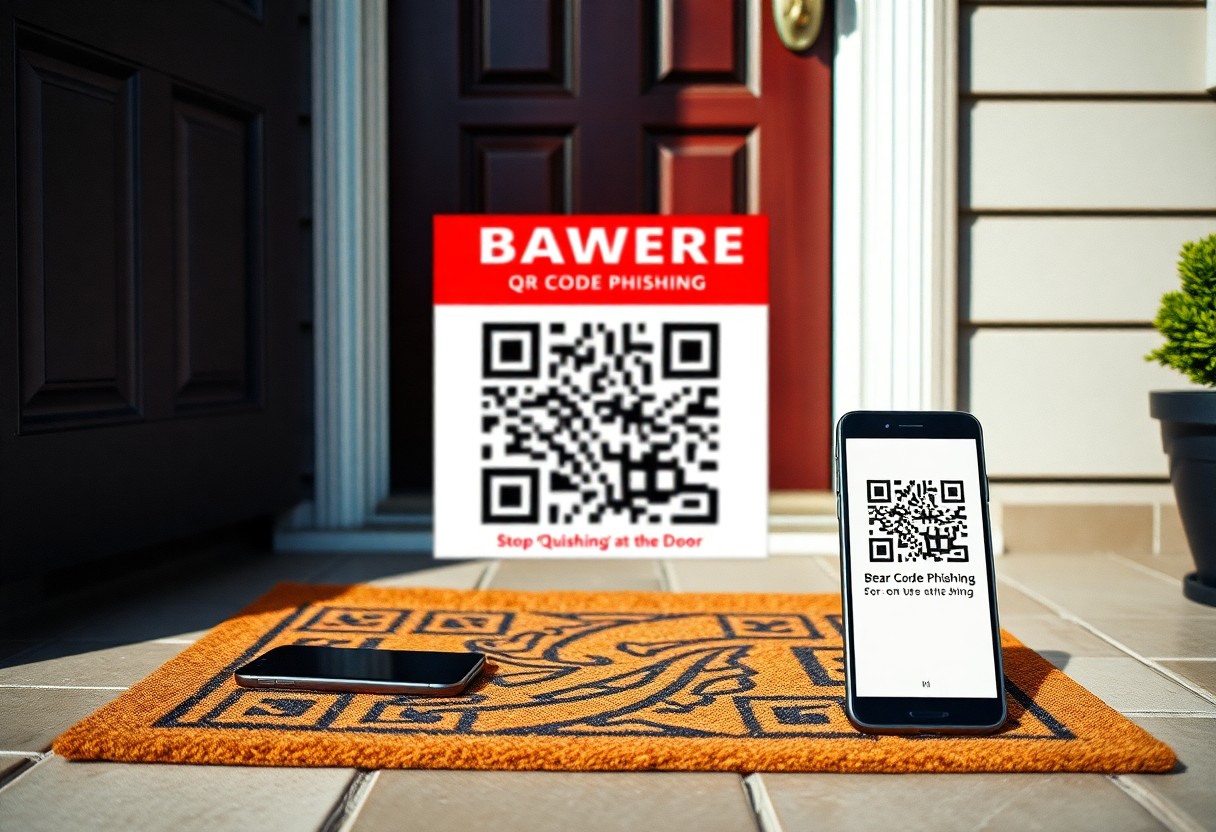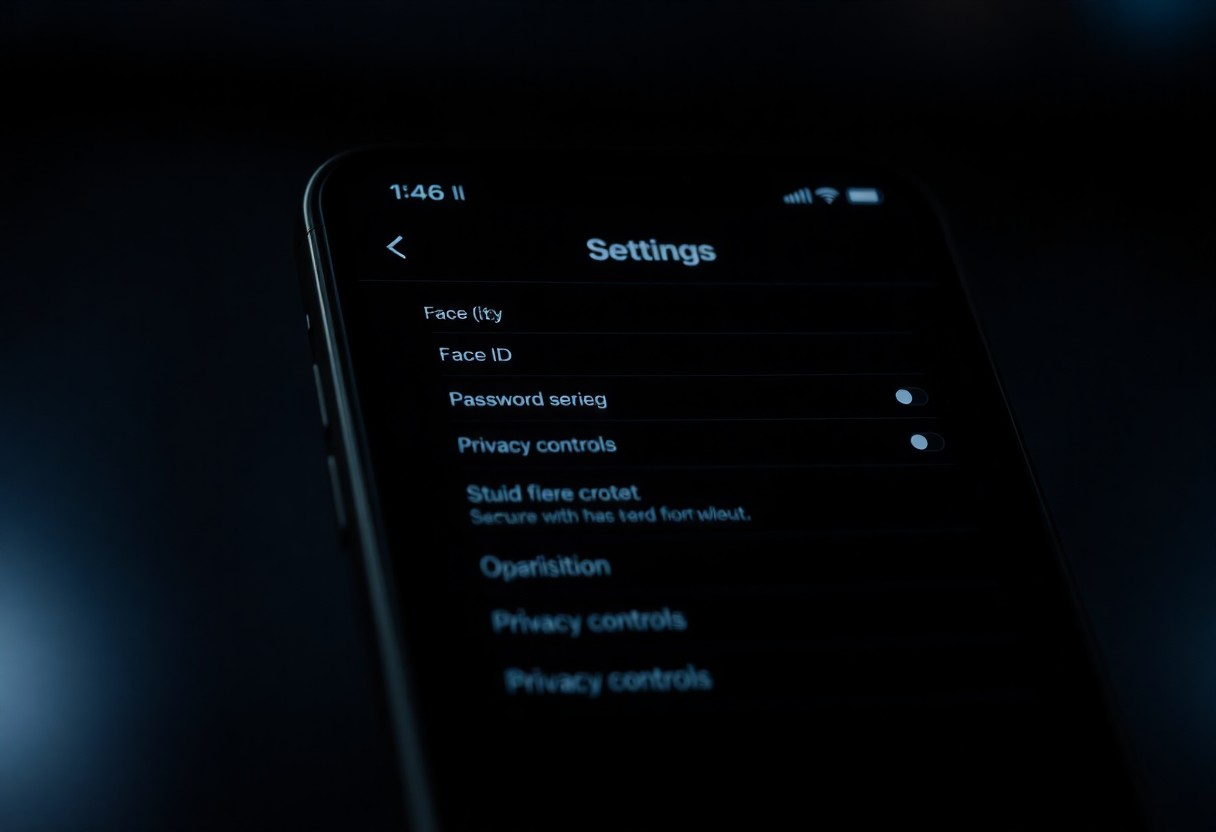Phishing attacks have evolved, and now they often come in the form of QR codes that you might encounter every day. These deceptive codes can lead you to malicious websites designed to steal your personal information. By understanding how to recognize and avoid QR code phishing, known as “quishing,” you can protect your data and online safety. Stay vigilant and verify the source of any QR code before scanning, ensuring your security is never compromised.
Key Takeaways:
- QR codes can redirect users to malicious websites designed to steal personal information.
- Always verify the source of a QR code and avoid scanning codes from unknown or suspicious sources.
- Use a smartphone security app that provides warnings about unsafe websites and phishing attempts.
The Anatomy of a QR Code Phishing Attack
Understanding how QR code phishing attacks function can help you guard against them. These attacks often exploit your trust in the convenience of scanning codes. A malicious actor generates a QR code linked to a fake website or malicious software. When you scan the code, it redirects you to a site designed to steal your personal information or deliver malware. This vulnerability is enhanced in places where you let your guard down, such as restaurants or event venues, where QR codes are prevalent.
How “Quishing” Works: The Technical Breakdown
“Quishing” leverages your smartphone’s camera functionality, making it deceptively simple for attackers. Typically, a QR code redirects you to a URL that appears trustworthy but harbors malware or phishing traps. When scanned, it often bypasses security measures, as you might not scrutinize the URL as you would when clicking links in an email. Attackers can use URL shortening services to hide the true destination, making it even harder to detect the threat.
Common Red Flags: Spotting Malicious QR Codes
Recognizing red flags is necessary in avoiding “quishing” scams. Look for signs of tampering, such as scribbled-over original codes or unofficial placements. Be wary of QR codes placed in public areas without clear branding or context. Additionally, if a code prompts you to enter sensitive information or download an app from an unknown source, treat it with caution.
To identify malicious QR codes, you should actively evaluate their surroundings and context. If a code is hastily affixed on a flyer, lacks credible branding, or shows signs of alteration, those are warning signs. You may also encounter codes asking for unusual permissions or information. Trust your instincts; if something feels off, it’s best to avoid scanning that code altogether. Always double-check links on a second device when possible, and consider additional verification methods before providing any personal data.
The Growing Trend: Why Cybercriminals Favor QR Codes
The rise in QR code usage presents a golden opportunity for cybercriminals. These codes can easily embed malicious links, making them a convenient method for executing phishing attacks. Unlike traditional phishing, which often relies on misleading emails or messages, QR codes offer a level of anonymity and quick engagement, allowing attackers to bypass typical cybersecurity measures. With increased smartphone adoption, the habit of scanning these codes without thought has created a fertile ground for “quishing” scams to thrive.
The COVID-19 Connection: A Surge in Usage
The global pandemic has accelerated the adoption of QR codes as businesses sought contactless solutions. In restaurants, you now scan codes to access menus, while retail stores employ them for easy payments. This surge in familiarity with QR codes has inadvertently opened avenues for cybercriminals, as people scan codes without a second thought, often ignoring the potential risks associated with unverified sources.
Ease of Access: The Appeal of Scanning over Clicking
Scanning a QR code requires less thought than clicking a link, which makes it an appealing option for users seeking convenience. Research shows that over 80% of smartphone users have scanned a QR code, highlighting how integrated they’ve become in daily life. With a quick scan, you bypass navigating through websites or search engines, making the experience feel seamless. This ease, however, can foster carelessness, as users may overlook where the QR code actually leads them, increasing susceptibility to malicious content.
Considering the shift towards scanning, you may not realize the inherent risks. Cybercriminals take advantage of this behavior by placing QR codes in public spaces or digital platforms, disguising them as legitimate opportunities. For instance, a code that claims to offer a discount might instead direct you to a phishing site designed to steal your personal information. Heightening your awareness before scanning any code is vital, as attackers continue to exploit this trend for nefarious purposes.
High-Impact Techniques: How Phishers Craft Their Schemes
Phishers deploy a variety of sophisticated techniques to deceive victims and exploit vulnerabilities. Their schemes often blend technical prowess with psychological manipulation, creating seemingly legitimate scenarios that lower your defenses. By employing tactics such as social engineering and domain spoofing, they can craft a believable narrative that encourages you to engage with their malicious links, amplifying the risk of falling for their traps.
Social Engineering: Manipulating Trust for Success
Social engineering tactics rely on building a façade of trust. Phishers often impersonate trusted entities, such as banks or tech support, to elicit sensitive information from you. By exploiting emotions like urgency or fear, they create scenarios where you feel compelled to act quickly without thinking critically about the situation. This psychological manipulation can lead you to unwittingly share personal data, making you an easy target.
Domain Spoofing: The Deceptive Art of URL Alteration
Domain spoofing involves creating a malicious URL that closely resembles a legitimate one, making it difficult for you to discern between the two. Phishers utilize minor alterations in spelling, subdomains, or additional characters to trick you into believing you are visiting a familiar website. This tactic not only increases the likelihood of your interaction but also allows phishers to harvest sensitive data once you unknowingly input your login credentials.
Understanding domain spoofing is vital in recognizing phishing attempts. A common example is an email claiming to be from “yourbank.com” but using a URL like “yourbank.secure-login.com” with subtle changes that escape your notice. Research indicates that nearly 30% of phishing attacks now use this technique, emphasizing the need for vigilance. Always inspect URLs closely; hover over links before clicking to ensure they lead to the expected destination. A simple scan for misspellings or unfamiliar domains can help you avoid falling victim to these deceptive practices.
Fortifying Your Defenses: Practical Tips to Prevent Quishing
Enhancing your defenses against quishing demands vigilance and proactive measures. Start by enabling two-factor authentication on your accounts and keep software up to date. Regularly educate yourself about the latest phishing tactics, and always be cautious of unsolicited QR codes. Make it a habit to verify the legitimacy of any link before scanning. Investing time in security can save you from the potential fallout of a successful quishing attack. This will mitigate risks and help you identify threats effectively.
Verification Strategies: How to Authenticate Links
Always scrutinize QR codes before scanning. Use URL preview services that reveal the destination of the link without directing you there. Check for SSL certificates by ensuring the site starts with “https://” and look for domain legitimacy. Trustworthy organizations often provide links directly on their official websites, allowing you to engage with their content safely. This added layer ensures the QR code is not masking a malicious site.
Safe Scanning Practices: Tools to Shield Against Attacks
Utilize mobile security apps that offer robust scanning features to evaluate the safety of QR codes. Tools like Norton Mobile Security and McAfee provide real-time protection and alerts against malicious links. Keeping your smartphone’s operating system up to date also plays a pivotal role in fortifying defenses. Regularly update your camera and scanning software as well, as manufacturers often release patches to address vulnerabilities. Investing in a reliable antivirus app can offer another layer of protection against these threats.
Legal and Ethical Considerations: The Fight Against QR Code Phishing
As QR code phishing becomes increasingly prevalent, legal and ethical frameworks are evolving to combat this growing threat. Law enforcement and regulatory bodies are developing guidelines aimed at enhancing public protection against these scams. Understanding your rights and the obligations of businesses in preventing QR code phishing is vital for staying safe in a digital landscape increasingly filled with deception.
Emerging Laws and Regulations: What’s Being Done
Recent legislative measures are being implemented to address the rise of QR code phishing. Various jurisdictions are crafting laws that hold businesses accountable for implementing security measures in digital transactions. These regulations aim to establish stricter penalties for offenders, thus deterring potential fraudsters from exploiting consumers through malicious QR code tactics.
The Role of Organizations: Promoting Public Awareness
Organizations play a pivotal role in promoting public awareness about QR code phishing. By developing educational campaigns and providing resources, they empower you to identify and report suspicious QR codes quickly. Collaborations with cybersecurity experts allow these organizations to disseminate accurate information and best practices, ensuring a safer experience for all users.
Many organizations, including industry leaders and cybersecurity firms, are investing in public awareness initiatives targeting QR code security. These campaigns often utilize social media, webinars, and community outreach to reach diverse audiences. Providing real-world examples of QR code scams and effective methods for verification can help you differentiate between legitimate and fraudulent codes. Such efforts emphasize the collective responsibility in recognizing and reporting phishing attempts while fostering a proactive mindset towards digital security in your daily interactions.
Conclusion
Upon reflecting on the dangers of QR code phishing, it is necessary that you remain vigilant and informed. By understanding how “quishing” operates, you can protect yourself from potential scams and unauthorized access to your personal information. Always verify the source of any QR code before scanning and consider using safety measures such as QR code scanners that identify malicious links. Your proactive approach can significantly reduce the risk of falling victim to these deceptive tactics.



